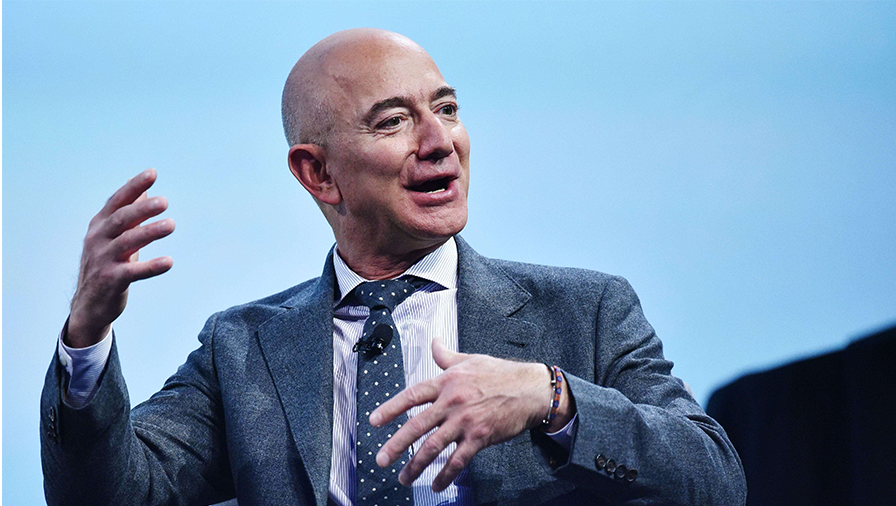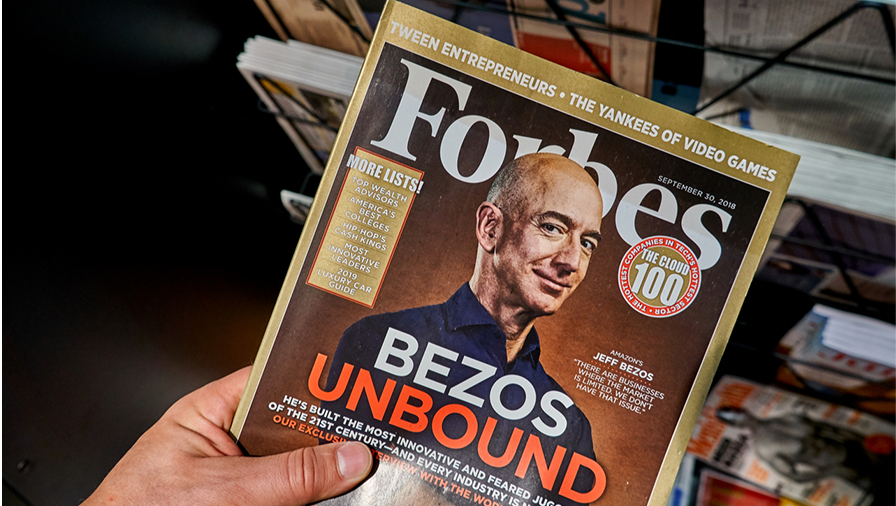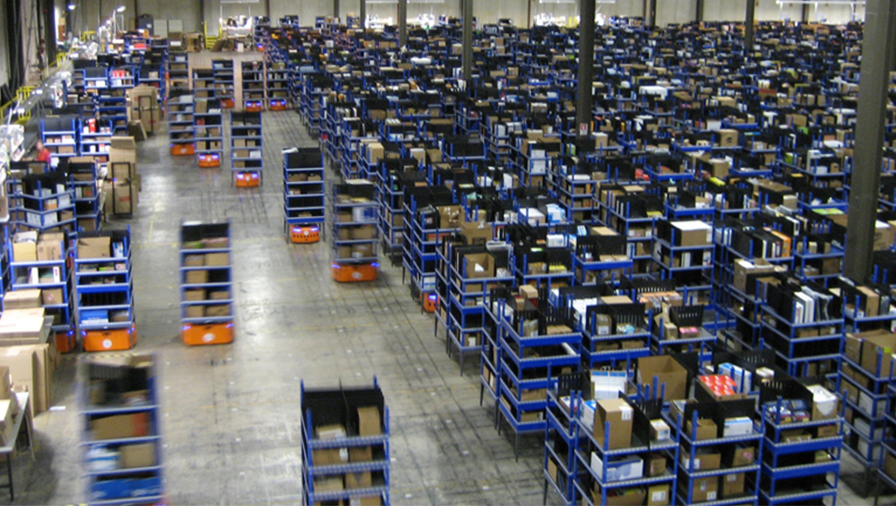You want to be as good as Amazon? – here’s how
Book Review: Two insiders reveal how Jeff Bezos built a high-tech colossus in just over two decades.
Book Review: Two insiders reveal how Jeff Bezos built a high-tech colossus in just over two decades.
The tech giants at the top of corporate America – and by extension much of the world – are damned if they do and damned if they don’t.
They have become even more powerful during the Covid-19 pandemic, while calls for them to be brought to heel are also rising.
Yet all of them – Alphabet/Google, Amazon, Apple, Facebook, and Microsoft – started from scratch and created new business categories. They are collectively worth US$8 trillion, a 50% increase in the past year.
Amazon alone added 500,000 to its workforce and now employs 1.3 million worldwide. Total revenue in 2020 was US$386.1 billion, up from US$280.5b in 2019. Net income nearly doubled from US$11.6b to US$21.3b.
A few years ago, the media in Australia and New Zealand were obsessed with Amazon setting up shop and fears that it would put many retailers out of business.
That did not materialise but Amazon soon shot to the top of online retailers in Australia, pushing Bunnings into second place. In the pre-Christmas period that included Black Friday, Amazon’s online sales spiked 75% in the quarter ending December 31.
But so did online sales for Amazon’s many competitors, mainly brick-and-mortar retailers with strong online offerings, according to SEMrush data. For example, the data firm said JB Hi-Fi had 12.8 million more visits to its website, while Bunnings had 9.6 million more.
Amazon’s inroads have come at a cost. In February, Amazon Australia reported sales of A$1.12b in 2020, up from the previous year’s A$562.1m. The 2020 loss was A$3.8m, as it continued to invest in distribution centres. A fourth opened in Brisbane last September and Amazon is about to move into new headquarters in Sydney.
In the beginning
Amazon’s continued expansion is no surprise to those who have followed its fortunes since Jeff Bezos launched his public company in 1997.
From the beginning, he espoused philosophies that focus on customers, long-term growth, constant innovation, and operational excellence.
Just over two decades later, these principles have remained, though honed by setbacks as well as successes.

Naturally, this has not passed unnoticed in the publishing world, not least because Bezos’s personal wealth enabled him to buy the Washington Post outright.
The best known publications are Richard Brandt’s One Click (2012) and Brad Stone’s The Everything Store (2013), which were based on interviews with insiders but not Bezos himself.
A former insider, John Rossman, followed with The Amazon Way on IoT (2016) and Think Like Amazon (2019). Fortune writer Brian Dumaine’s Bezonomics (2020) and Ram Charan’s The Amazon Management System (2019) examined the business model, as did a handful of other technical textbooks.
Bezos’s own writings have been compiled into a couple of volumes: The Bezos Letters (2019) and Invent and Wander (2020).
A more critical account of Amazon’s impact on society and its employees is Fulfilment: Winning and Losing in One Click America, by Alec McGillis, published this week.
Another new title is Working Backwards, by Colin Bryar and Bill Carr. They are also former insiders, having worked a total of 27 years at Amazon. But like some of the above titles, their experience does not include events in the past five or six years. Bryar started in 1998 and left in 2010; Carr was there from 1999 to 2014.
But this doesn’t matter for outsiders seeking tips from Amazon’s remarkable rise and pointers to its future.
Changes at the top are common as the company has moved into new areas of business. Bezos himself has announced his move to become executive chair – while two key aides, Jeff Blackburn and Jeff Wilke, once tipped as successors – have retired. Other long-serving executives have also left in recent months. A new chief executive, Andy Jassy, will take over in September.

Business culture
In Bryar and Carr’s account, the Amazon business culture is as rigorous as it is ruthless, with little left to chance about the demands on executives while also allowing for considerable gambles.
The authors boil down their suggestions from Amazon’s extensive playbook to these:
There are plenty of other rules and ideas – such as the ‘flywheel’ theory to make things go faster, or a version of Toyota’s Andon Cord, when defects are detected – as Bryar and Carr’s most valuable contribution is their case studies.
Hits and misses
Amazon’s history is mainly one of successes and few failures. One winner was the Kindle, the device Amazon invented to allow instant delivery of e-books and then video, supplanting the need for printed books and DVDs.

The Kindle was launched in November 2007 as an example of ‘working backwards’. It was announced in a press release outlining customer benefits and then invented to meet them.
While the Kindle was an immediate success, forcing publishers to move into the digital age, the 3D Fire Phone was a failure, meeting no customer demand.
Apple had stolen a march over Amazon with digital delivery of music through the iPod. But Amazon reversed those positions when it entered the video market.
Early on, Amazon realised that customers preferred to watch videos downloaded to TV sets rather than a computer, particularly as Apple maintained a proprietary grip over content for its own devices.
In those days, the Hollywood studios gave the video renters a 60 to 90-day window from the end of a cinema release to when movies were sold to pay or cable TV.
Netflix, originally a deliverer of DVDs, upended this market in 2007 when it introduced ‘all you can eat’ subscriptions rather than rental. But to do so, it had to create its own content.
Amazon, which already had its premium subscriber Prime service for free shipping, offered a product called Unbox. After Netflix’s success with House of Cards, Unbox was dropped as a name in 2008 and, once more hurdles and technical issues were overcome, was launched in 2011 as Amazon Prime Video.
By then, Amazon Studios was producing award-winning content, including an early hit, The Man in the High Castle. The Kindle Fire Tablet was a cheaper version of the iPad.

Further expansion
Prime, first launched in 2005, became the critical element in Amazon’s rapid growth. In 13 years, Prime had 100 million subscribers addicted to the ‘one click’ purchase and free delivery.
Working Backwards doesn’t cover Amazon’s expansion into the purchase of the Whole Foods Markets chain and other online delivery operations, its move into high-tech supermarkets that have no checkouts, or devices such as the voice-assistant Alexa and Fire TV.
Nor does it enter into a debate over the social impact of Bezos’s relentless goal of growth and dominance of markets for every conceivable product. But the book does provide background on the rise of Amazon’s web services operation that has made it a leader in cloud computing.

AWS began modestly in 2002 as a tech service to its affiliates on how best to use video streaming and artificial intelligence on websites. Netflix, incidentally, is a client for both.
Today, AWS is larger than all its cloud computing rivals, including Microsoft and Oracle, with revenues of more than US$39b and earning half of Amazon’s profits.
AWS, which has been steered throughout by CEO-apparent Jassy, will no doubt continue to ensure Amazon’s future financial heft, while its relatively low public profile could help deflect regulatory moves from those who think Bezos’s enterprise is already too big.
Working Backwards, by Colin Bryar and Bill Carr (Macmillan)
Nevil Gibson is a former editor at large for NBR. He has contributed film and book reviews to various publications.
This is supplied content and not commissioned or paid for by NBR.